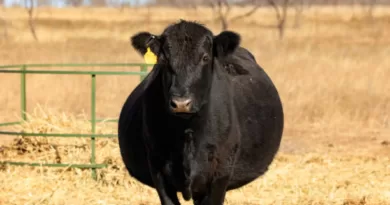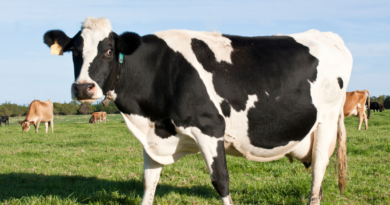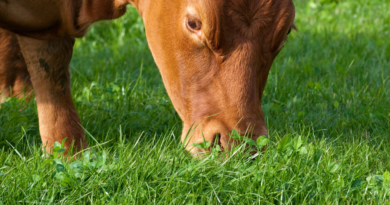Determining the Right Amount of Silage for Your Cows Daily
Determining the Right Amount of Silage for Your Cows Daily
Feeding cattle with the right quantity and quality of silage stands as a pivotal aspect of good farming practice. Providing an enriched understanding of what silage is: its nutritional value and indispensable role in cattle rearing, becomes an important step in achieving the bigger picture. Moreover, comprehending the dietary requirements of different cattle, considering factors like breed, weight, age, and productivity status, is crucial to ensuring their good health and maximizing productivity.
A clear grasp of the correlation between silage management, quality and its effect on the needed quantity per cow per day is also crucial. Thereby, achieving a balance between understanding the variables associated with silage quality and developing an aptitude for adjusting the quantity of silage given to each cow as per their specific needs presents an essential backdrop to this discourse.
Understanding Silage
Understanding Silage
Silage is a type of animal feed made by fermenting and preserving green fodder or crop residues in a silo, a structure specifically designed for storage. The fermentation process uses naturally occurring bacteria to convert sugars in the plant matter into lactic acid, creating a sour, vinegar-like smell. This process helps to retain the maximum nutrient value from the original crops, even across long periods of storage.
Nutritional Benefits of Silage
The primary nutritional benefit of silage is its high energy content, which is essential for milk production in dairy cows and weight gain in beef cattle. Silage can also provide a significant portion of the protein needs for cattle. The exact nutritional content of silage can vary, depending upon the type of crops used and how it is stored and managed. Nevertheless, silage is generally high in carbohydrates, proteins, vitamins, and minerals.
Why Silage is Essential in Cattle Rearing
The year-round availability of silage makes it an indispensable element in cattle rearing. During the winter months or in periods of prolonged drought, when fresh grass and other feeds are scarce, silage provides a readily-available source of nutrition. Additionally, its high moisture content can help to keep cattle adequately hydrated.
Silage requirements per cow per day
The amount of silage required per cow per day can vary depending on several factors, including the weight of the animal, the quality of the silage, and the cow’s stage of production (dry, lactating, etc.). As an approximation, a lactating dairy cow may require around 35-50 lbs of silage per day, while a dry, non-pregnant cow might require around 20-30 lbs. However, these figures can vary, and placing reliance on professional agricultural advice for specific situations is recommended.
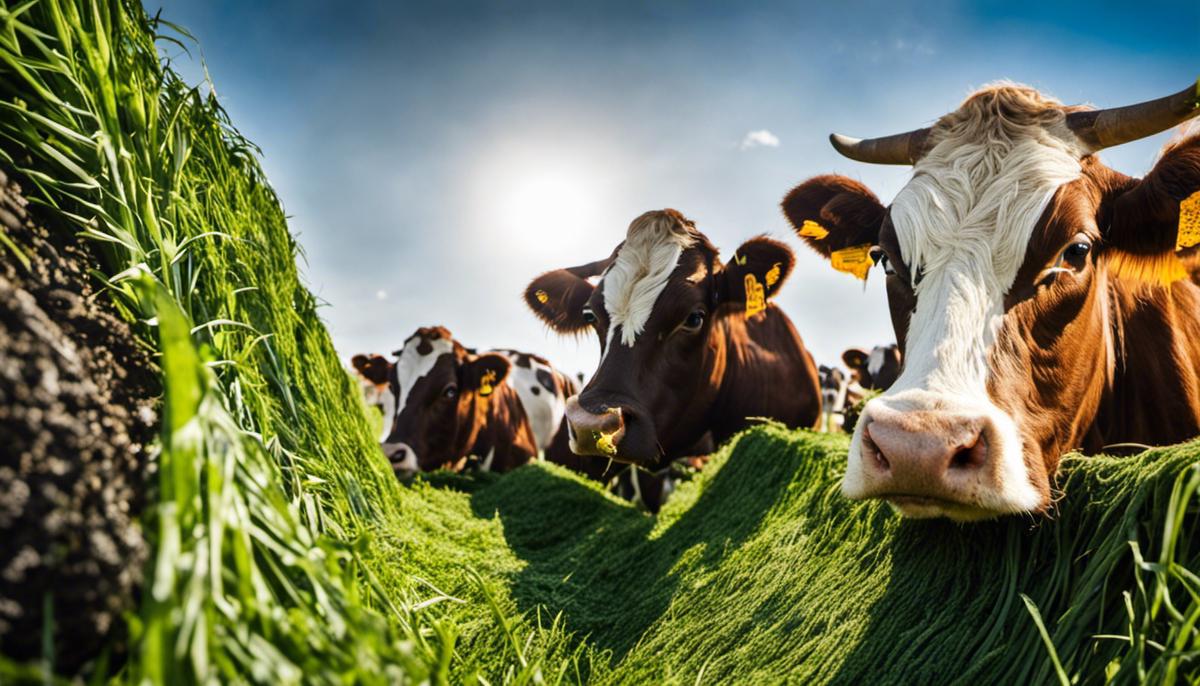
See Also: Can you freeze yogurt? YES – here’s how!
Cattle Dietary Requirements
Understanding Cattle Dietary Requirements
Cattle require a variety of nutrients to support their growth, maintenance, and production. The six basic nutrient groups they need are water, proteins, carbs, fats, vitamins, and minerals. Water and feed intake can fluctuate and depend on several factors, such as the kind of feed, ambient temperature, and cow size, breed, and productiveness.
Role of Silage in Cattle Diet
Silage is fermented, high-moisture stored fodder that can be fed to cows or other ruminants. The process of fermentation partially converts sugars to lactic acid, preserving the nutritional value in the plant and packaging it into a form palatable to cattle. Silage is the primary food source for cattle during times when fresh pasture isn’t available, such as in winter or during drought. The primary component of silage is fiber, which is essential for a cow’s digestive health and nutrient absorption.
Calculating Silage per Cow per Day
When calculating how much silage a cow needs per day, one must consider several factors. These include the quality of the silage, what other foods the cow is consuming, and the cow’s weight, age, and productivity status. As a general rule, a lactating dairy cow can eat 2-2.5% of its body weight in dry matter from silage. For example, a dairy cow weighing 1,400 pounds will consume approximately 28-35 pounds of dry matter per day.
Effects of Breed, Weight, Age and Productivity Status on Nutritional Needs
Cattle breed affects the body size, growth rates, milk production, and meat quality, which in turn influence the amount and types of nutrients needed. Larger breeds and those bred for high production will generally require more feed.
Likewise, cattle weight plays a critical role in their dietary needs, with heavier cattle requiring more total nutrients. The age of the animal also impacts nutrient needs. Young, growing cattle have a higher nutrient requirement per pound of body weight compared to mature cattle.
In terms of productivity status, lactating cows have increased energy needs to support milk production. Beef cattle similarly have higher requirements during the growth and finishing phases. Non-lactating and beef cattle at rest will have lower nutrient demands.
Adjusting Cattle Diet and Silage Intake
It’s crucial to regularly assess cattle condition and adjust their diet as necessary. If a cow appears in poor health, it may not be getting the nutrients it needs, welcome changes might be needed in the feed ratio. Veterinarians or feed consultants can provide guidance and help formulate a balanced diet that considers all influencing factors. Remember, happy and healthy cows with a well-balanced diet will always yield better productivity.
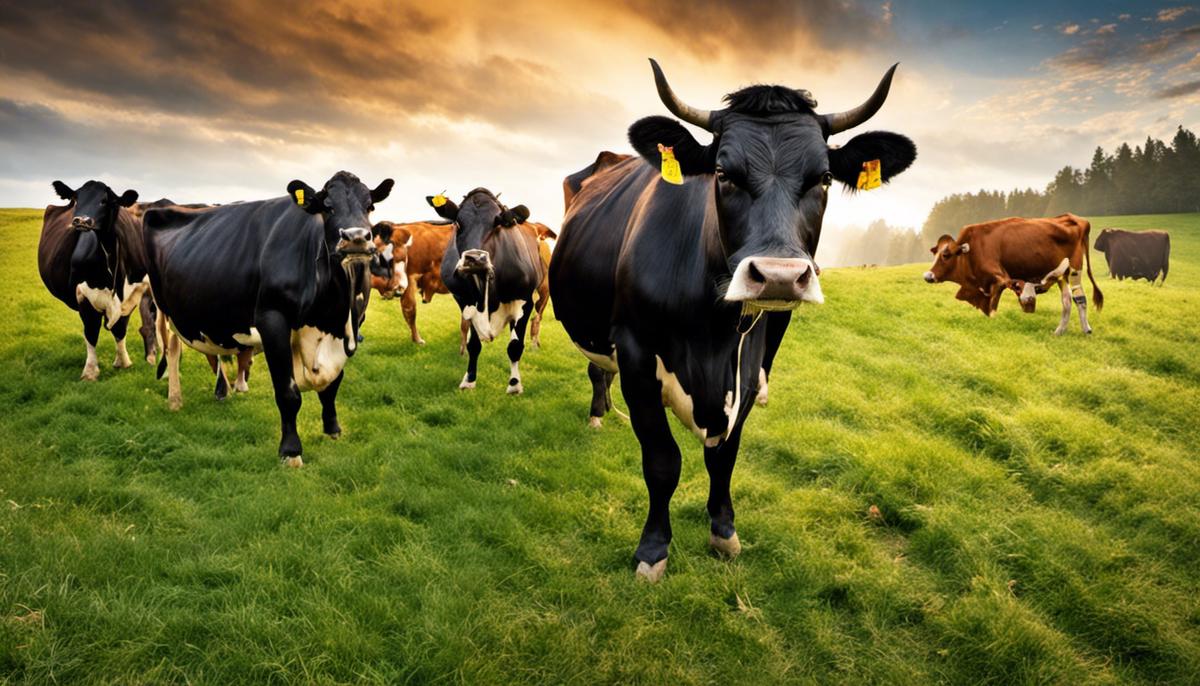
Silage Management and Quality
Understanding Silage
Silage is a type of fodder made from green foliage crops that have been preserved by fermentation, similar to the way pickles or sauerkraut are made. High-quality silage is very beneficial for cows, providing them with the necessary nutrients and energy to produce milk and maintain their overall well-being.
Factors Affecting Nutritional Value and Quality of Silage
There are multiple factors affecting the nutritional value and quality of silage. The first one is the right time to harvest the crops for silage. Ideal harvesting time could vary depending on your specific geographic location and the weather conditions of a particular year. However, as a general rule, crops should be harvested when they have the most nutrients, typically when they’re at or near their peak of maturity.
Another factor is the moisture content of the crop at the time of harvesting. Ideally, crops should be harvested for silage when their moisture content is around 65-70%. If the moisture content is too high, it can result in fermentation issues, whilst too low moisture leads to poor compaction and excess oxygen, which negatively affects the quality of your silage.
Silage Storing Procedures
The way you store silage also has a major impact on its quality. After the crops are harvested and chopped, they should be packed tightly into a silo or other storage structure as quickly as possible. This creates an anaerobic (oxygen-deprived) environment that allows the silage to ferment properly. It’s also crucial to seal the silo effectively to prevent oxygen and water from entering.
Determining Silage Quantity Per Cow Per Day
The quantity of silage a cow needs depends on various factors. For example, the cow’s body weight, age, stage of lactation, and overall health status all play a role. Generally speaking, a dairy cow may consume between 35 to 50 pounds of silage per day. This amount can be adjusted based on the nutrient content of the silage and the other feeds that are part of the cow’s diet.
Final Thoughts
Proper management of silage can greatly impact its quality and consequently the health and productivity of your cattle. Monitoring the variables mentioned above can ensure your cows are receiving optimal nutrition and that your farming operation remains sustainable and successful.
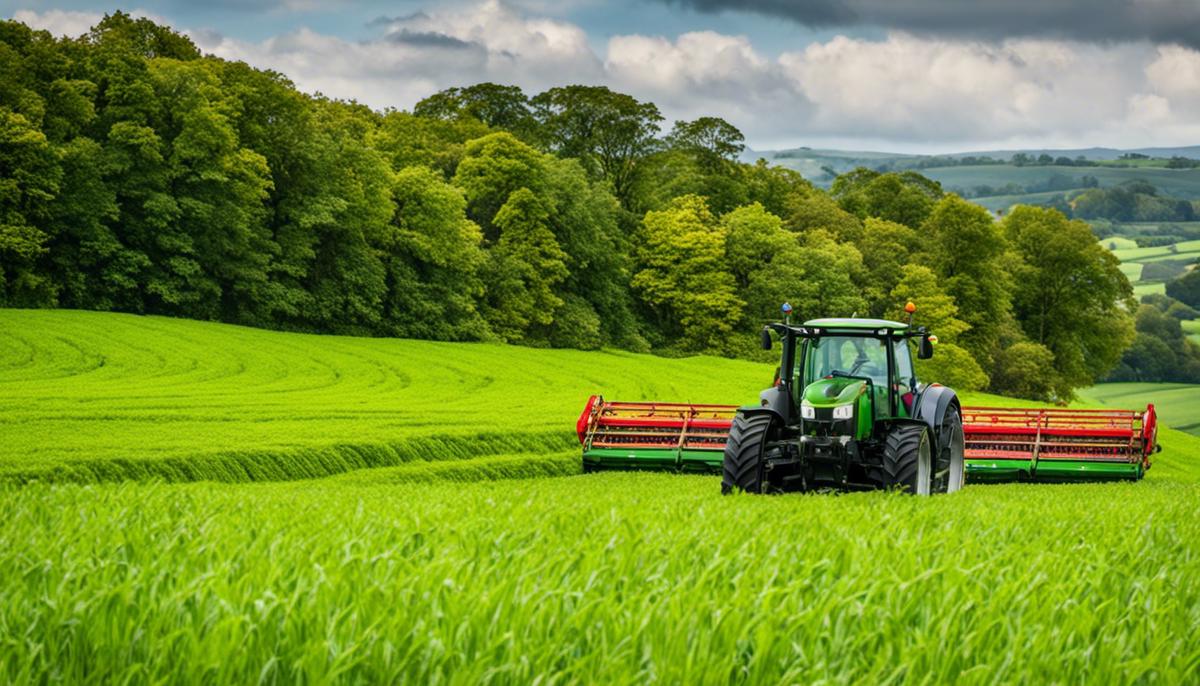
Calculating Silage Intake
Understanding Cow Nutritional Needs
First and foremost, it’s important to understand that a cow’s nutritional needs vary depending on their type, age, body weight, and productivity level. For instance, a lactating cow has different needs than a dry cow or a heifer. As a thumb rule, each cow usually consumes about 2.5% to 3.0% of her body weight in total dry matter per day. However, this percentage can go up to 3.5% or even 4.5% for lactating cows, which is a crucial factor in calculating silage intake.
Factors Influencing Silage Intake
Several factors influence the amount of silage a cow can eat. Along with the cow’s weight and production level, the forage quality also influences intake. Good quality silage will be consumed in larger quantities than low-quality silage. Physical characteristics of the silage, like its chop length and structure (whether long or short), also contribute to how much a cow may consume.
Calculating Daily Silage Intake
To calculate the daily silage intake for a cow, you need to know:
- The bodyweight of the cow
- The percentage of dry matter absorption, which can be approximated or taken from nutritional tables;
- The cow’s productivity level.
For instance, a 1,500-pound beef cow not in lactation might consume around 2.5% of its bodyweight in dry matter. Given that silage is approximately 65% water (or 35% dry matter), the calculation would be as follows:
- 1,500 lbs (cow’s weight) x 0.025 (intake as % of bodyweight) = 37.5 lbs of dry matter needed.
- Considering that silage consists of around 35% dry matter, divide the total dry matter needed by .35 to get the total intake of silage. So, 37.5 lbs / 0.35 = 107 lbs of silage.
Therefore, this particular cow would need approximately 107 pounds of silage per day.
Monitoring Silage Intake
Keep in mind that these are approximate interpretations and these figures can vary. It’s vital to monitor individual cow’s consumption and adjust their diet as necessary. You may need to increase the amount of silage you offer if you notice weight loss or decrease it in the case of weight gain.
Utilizing Professional Assistance
If in any doubt, it’s always advisable to seek the expertise of a professional animal nutritionist or veterinary doctor. They can provide specific feeding recommendations to match a cow’s specific needs.
Remember, these calculations serve as an initial guide, but individual needs may vary. Every farmer should, therefore, adapt feeding plans to their own herd’s characteristics.
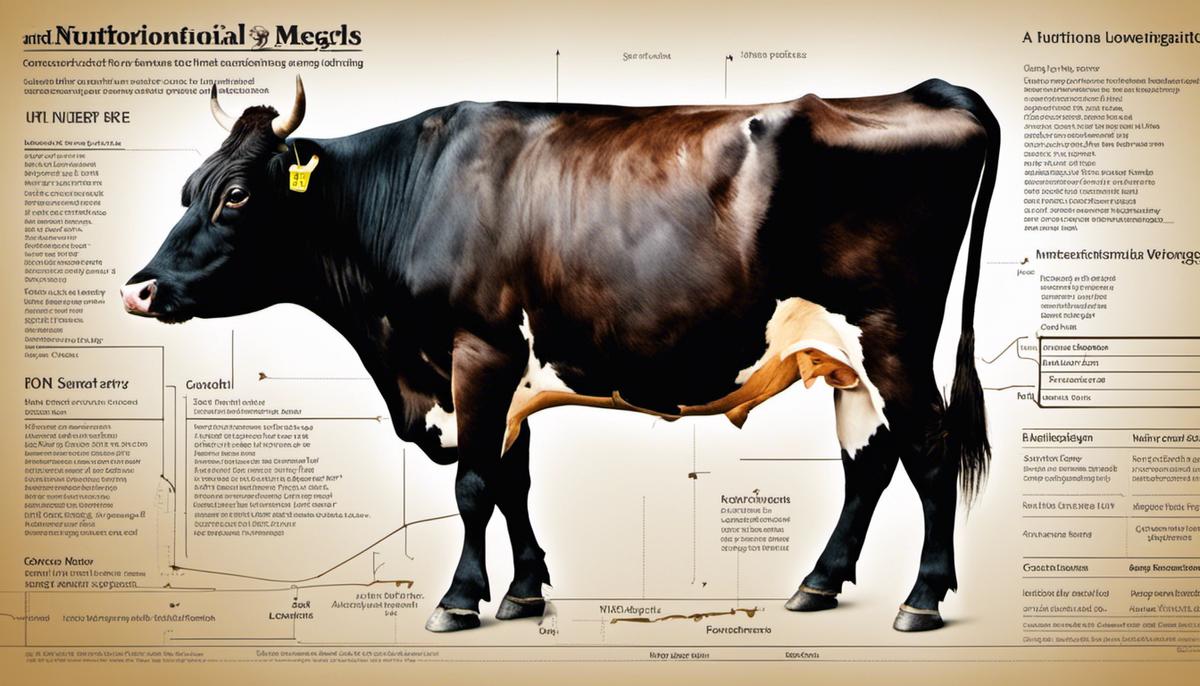
Adjusting Silage Quantity
Understanding Cattle Dietary Needs
Cattle’s dietary needs can greatly vary depending on their age, weight, and purpose (i.e. dairy cows versus beef cows). However, an average adult cow should generally be fed about 2.0% to 2.5% of their body weight in dry matter from silage each day. For instance, a 1,400-pound cow should be fed between 28 and 35 pounds of silage daily. This is a rough estimate, as there are several factors to keep in mind, including type of silage, moisture content, and other elements within the feed.
Identifying Signs of Inadequate Silage Intake
Cattle receiving insufficient silage may display several telling signs that serve as an alert to their inadequate intake. These may include: loss of body condition or weight, reduced milk production in dairy cows, diminished growth in calves or young stock, and signs of vitamin or mineral deficiencies, such as dull coats or lowered fertility rates. Inadequate fiber can lead to digestive disorders, such as acidosis. Inactivity and decreased socialization, evident by standing alone or lying down frequently, could signal health problems resulting from insufficient nutrition.
Spotting Overfeeding Indicators
Just as underfeeding can have serious implications, overfeeding livestock can also lead to various health issues like metabolic disorders and obesity. Obvious indicators of overfeeding may include rapid weight gain or an overly ‘full’ appearance. Other signs are more subtle but equally significant. These can include bouts of diarrhea, lameness, and a higher-than-average incidence of sickness. Dairy cows may also show signs of overfeeding by producing excess milk with a low-fat content, as this suggests they are consuming more energy than they need.
Adjusting Silage Quantity
Adjustments to the quantity of silage fed to cattle should be done gradually. Sudden dietary changes can have a negative effect on a cow’s rumen bacteria and potentially lead to digestive disorders. When increasing the amount of silage, it should be done incrementally over a period of 7-14 days.
In the case of reducing the silage portion, consider integrating high-quality forage such as hay or a grain mix into their diet to compensate for the decreased energy provision. This will help maintain their body condition and overall health.
Monitoring and Recordkeeping
Regular monitoring of cattle and keeping detailed records are crucial. Not only do these practices help identify any health issues promptly, but they also provide valuable data for understanding your herd’s feed requirements better. Regularly measure and monitor the cows’ weight, milk production, and health issues. Consistently recording this information will allow you to make more informed decisions about managing your herd’s nutritional needs efficiently.
In conclusion
Adjusting silage quantities depends on understanding the signs of both overfeeding and underfeeding. Once these are down pat, any necessary adjustments can be made incrementally to help achieve optimal livestock health and productivity.
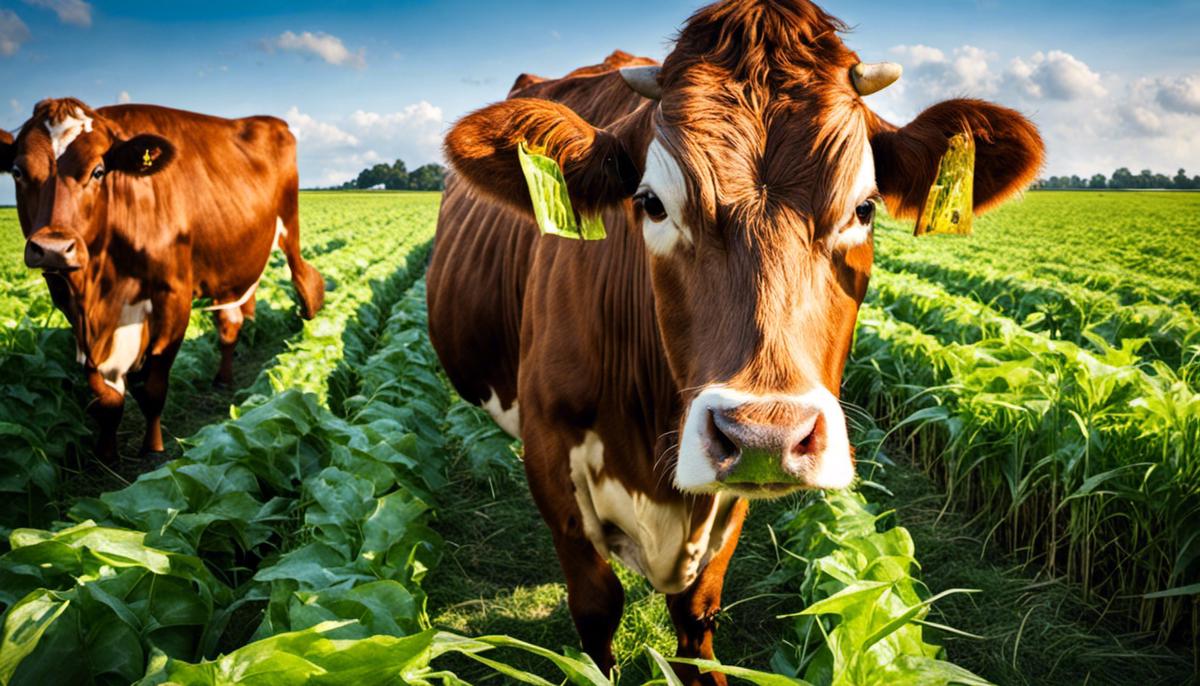
With a wide understanding of cattle dietary needs and silage management, farmers can predict a more accurate quantity of silage to feed their herd on a daily basis. Amongst all the variables, being able to discern when the cattle are getting either too much or too little silage is equally significant. Gaining an insight into reading these signs and adjusting the given silage portion accordingly can lead to healthier livestock, higher production rates, and consequently, more profits.
Remember, the science of feeding cattle lies not only in the quantity, but more importantly, in the quality of the food they receive. As such, striving to perfect silage management and educating oneself further about the corresponding facets is a path that guarantees both the health of your herd and the success of your farm.
Enjoyed this article? You may also like:
Does Milk Help Heartburn? The Science Behind It
Can you freeze yogurt? YES – here’s how!


